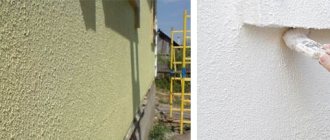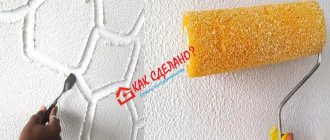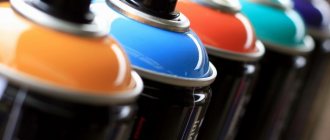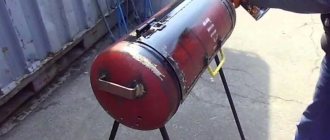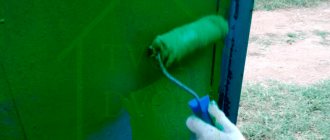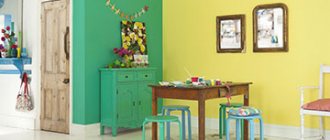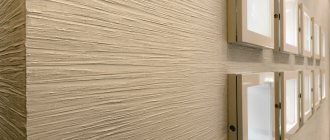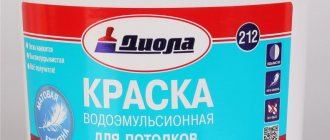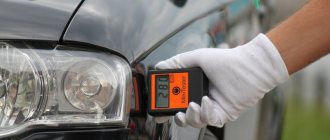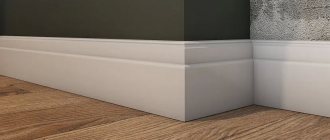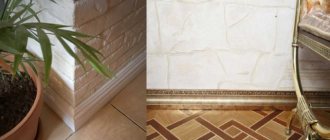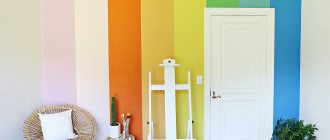Omsa socks set
349 ₽ More details
Omsa socks set
349 ₽ More details
Wallpaper for walls
Corrugated sheeting is considered one of the most popular and popular materials not only for finishing the roof, but also for creating fences and carrying out decorative work on the site. It is economical, durable and strong, withstands the negative influence of the environment, and due to its dense texture it does not rust. To enhance the protection of the material, craftsmen advise using paint for corrugated sheets.
Choose high-quality paint for corrugated sheets
Types of protective coatings for corrugated sheets
Based on the presence of a protective coating, profiled steel sheets are divided into two main types: with and without a paint layer. Even unpainted sheets have minimal protection - this is a corrosion-resistant zinc or aluminum-zinc coating.
Types of polymer coatings
Corrugated sheets with color coating are produced in accordance with GOST 30246, which requires the type of paintwork materials to be indicated in the marking. Each manufacturer decides for himself what to paint the corrugated sheet with, and often the paint has a unique proprietary composition, the formula of which is kept secret. But the most commonly used coatings are:
- polyester;
- purol (polyurethane based);
- plastisol (based on polyvinyl chloride).
Each of them has its own special properties - thickness, resistance to ultraviolet radiation, scratches, precipitation, etc. The type of coating also affects the cost of corrugated sheeting. The most durable, but also the most expensive, coating is polydifluorionade.
The structure of the corrugated sheet, in addition to the zinc layer, may contain other protective coatings Source stpulscen.ru
Colors
The paint for the corrugated sheet is selected from the RAL scale of two hundred different shades. They all have their own name and number so that there are no discrepancies when placing an order. For sale through retail chains and construction markets, manufacturers produce sheets of only a few of the most popular colors - beige, blue, red, green, brown.
RAL color catalog Source beltacolor.ru
For reference! RAL is the German color standard for decorative coatings. There are others: Finnish RR, Swedish PRELA.
Coloring methods
When deciding whether it is possible to paint galvanized corrugated sheets and with what, manufacturers choose not only the type of coating, but also the technology for its application. In factory conditions, they most often resort to the most modern and reliable method of powder coating, which requires heat chambers. Companies and firms that do not have such equipment resort to other methods - electrostatic, pneumatic, airless.
- Powder coating.
This technology allows you to create the most durable coating that can withstand severe mechanical stress and temperature changes from +150 to -60 degrees. Powder is sprayed onto the degreased phosphated surface of the steel sheet, after which it is placed in a heat chamber, where the polymer powder melts at high temperature to create a protective layer.
Polymer powder dyes Source p1.zoon.ru
See also: Catalog of companies that specialize in finishing materials and related work
- Electrostatic painting.
Painting a profiled sheet using this method is based on the ability of the smallest particles of paint to become electrified in the electric field formed between the spray gun nozzle and the surface of the sheet, and to move under its influence.
- Airless painting.
For this method, a special nozzle is used. Its design makes it possible to sharply reduce the air pressure at the outlet, due to which paint particles come out of it at low speed and lie on the surface in an even layer. This reduces paint consumption.
Note! Electrostatic and airless painting is only suitable for sheets with a flat or slightly corrugated surface. But in the production of corrugated sheets, a flat workpiece is first painted, and then the desired relief is given to it, so these methods are applicable in production conditions, but are rarely used for manual painting of corrugated sheets on one’s own.
Apparatus for airless painting Source wagner-group.com
- Pneumatic painting.
The most common method for do-it-yourself painting is using a spray gun, which ejects paint from a nozzle under the action of compressed air. In this case, a rather strong fog of paint particles is formed, not all of which reach the surface being painted.
Paint for corrugated sheets: types, color scale, GOST
For almost 20 years, there has been a state standard regulating the requirements for profiled metal sheets. This is GOST 24045-94 “Bent steel sheet profiles with trapezoidal corrugations for construction.” Now many enterprises produce profiled sheets with other surface shapes, but the most common corrugated sheet is with trapezoidal corrugation.
Based on the presence of a protective and decorative coating, the standard divides the profiled sheet into two groups:
- profiled sheets without paint coating;
- sheets with paint and varnish coating in accordance with GOST 30246 (in this case, the marking must indicate the designation of paint and varnish materials).
Appendix “B” of the above standard determines what paint the corrugated sheet is painted with, as well as a list of other coatings that can be used to protect the profiled sheet.
Paint for corrugated sheets according to GOST 30246
| Types of paint and varnish coatings | Level of aggressive environmental impact with various protective coatings of the original workpiece material | ||||
| Name and designation of the covering layer material | Primer brand | Coating thickness, microns | zinc | aluminum-zinc | aluminum |
| Without cover | — | — | A | B | B |
| Enamel GF-2107 | — | 10-12 | A | B | B |
| Polyester silicone enamels ML-1202 | EP-0200 | 25-34 | B | B | B |
| Acrylic silicone enamels AS-1171, AS-5122 | EP-0200 | 25-30 | B | B | B |
| Organic dispersive paints OD-HV-221 | AK-0138 | 40-50 | B | B | B |
| Epoxy primer EP-0140 | — | 70-80 | B | B | B |
| Polyvinyl chloride plastic compounds PL-HV-122 | AK-0138 | 180-220 | B | C | C |
The letters indicate the degree of aggressiveness of the environment according to SNiP2.03.11: A - non-aggressive, B - slightly aggressive and C - moderately aggressive.
Paint for corrugated sheets can come in almost 200 colors and shades. There are three most commonly used color scales for protective and decorative coatings of corrugated sheets, these are:
- German RAL color scale,
- Finnish color scale RR,
- Swedish PRELA color chart.
RAL paint palette for corrugated sheets
In addition to the names of colors, these scales also have digital designations that eliminate ambiguous interpretation when placing an order for painted corrugated sheeting. The most widely used German standard is RAL, which has been used in most countries of the world for more than half a century.
Top ↑
Painting corrugated sheets at home
Sometimes you need to paint a profiled sheet yourself. This need arises in several cases.
- If the coating on the products was damaged during transportation or installation.
- If during installation it was necessary to trim the sheets or make holes in them.
The coating on the cuts is damaged, and corrosion develops faster in these places Source german-instrument.ru
Which is better, galvanized or painted corrugated sheeting ↑
People who are not very knowledgeable about the issue usually believe that profile painting replaces galvanizing. However, in reality, these processes complement each other. Painted corrugated sheeting is a galvanized corrugated sheet with an additional coating of conventional or polymer paint for corrugated sheets. It is applied either on one or both sides of the sheet. And imagine that hundredths of a millimeter in this case are enough to provide effective additional protection.
Let's remember how galvanizing behaves under the influence of external factors. Of course, the zinc layer protects the metal, but aggressive reagents, which are necessarily present in precipitation, “lick” the zinc over time. So, such material on the roof lasts no more than two to three decades.
An operation such as painting corrugated sheets makes it possible to significantly increase the service life of galvanized metal. For coloring, special polymer compositions are most often used, since they are resistant to various aggressive influences: chemicals, ultraviolet radiation, air, etc. Therefore, if we exclude mechanical influences that can disrupt the integrity of the finishing layer, corrugated sheets can last no less than slate or brick.
On a note
An unsurpassed competitor to polymer painting is powder coating of corrugated sheets. Only it provides greater strength , durability and corrosion resistance than a polymer coating.
The choice of profiled flooring depends on various factors: the climate of the area, the wind rose, the likelihood of mechanical, temperature, chemical and other influences.
Thus, it is obvious that the painted version of profiled metal sheets is more preferable. In addition to the greater security of this material, it should also be noted that the color range is variable.
Video description
How to eliminate small defects on corrugated sheets with colored polymer coating, watch in this video:
The metal surface must be prepared before painting - washed with a solution with detergent to remove dirt and degrease. To improve adhesion to paint, it is recommended to phosphate galvanize - treat it with special compounds or at least acetic acid. After which the surface is washed again with water until a neutral reaction is achieved and dried.
Before painting a polymer-coated profiled sheet, areas with flaking old paint are cleaned of it using sandpaper or a sander. All the paint, if it adheres well, does not need to be removed.
The prepared surface must be clean and dry. Since such work is usually carried out outdoors, cleaning and painting are carried out by dividing the entire area into sections. Having painted one area, prepare and paint the next one so that it does not have time to become covered with dust.
When preparing the spray gun for work, first make test paints, adjusting the air supply, the direction and size of the torch, and the distance from the surface.
Benefits of coloring
During operation, corrugated sheeting may become covered with scratches and defects, which in the future leads to the appearance of rust and corrosion. Using an emulsion will help protect against negative factors. Even material that is reaching the end of its service life can be renewed by covering the surface with a special mixture. Coloring is used in different cases :
- After careless transportation or improper storage, scratches and cracks may appear, which a special base will help to hide. Even one layer can prevent further destruction of the material. It is quite possible to carry out the procedure yourself.
- To reduce the cost of roofing work, cheap materials that do not provide protection and strengthening functions can be used. Painting corrugated sheets will help solve this problem, restoring the material's durability and stability.
- Structures that have served for more than 15 years can be restored not only cosmetically, but also practically, by covering the surface with a dense emulsion.
- Changing the color of the structure will help emphasize the overall style of the building and give it a sophisticated look. The simplest and most inexpensive material, if painted correctly, will look modern.
Thanks to the use of emulsion, it is possible to extend the life of the material, improve its appearance, and compact the surface. Even expensive options can fade over time, and the painted surface begins to deteriorate under the influence of ultraviolet radiation. The use of an emulsion will help solve any problem in terms of transforming corrugated sheets and enhancing its durability. The main thing is to find the right type of paint and choose a beautiful shade.
In this video we will look at how to choose paint for metal and wood:
Briefly about the main thing
Some owners of metal roofs and fences answer negatively to the question of whether it is possible to paint galvanized corrugated sheets, arguing that the paint quickly peels off, making the surface even more unsightly than before. But this can be avoided if you know how to properly prepare the surface and what paint to use. At home, it is best to use acrylic primer-enamel with anti-corrosion properties. To correct minor coating defects, it is more convenient to use aerosol paints.
Ratings 0
Emulsion selection
Experts advise paying attention to coloring compounds that can not come into contact with water and can withstand sudden temperature changes, heat and ultraviolet radiation. Not only the service life, but also the appearance and effectiveness of the procedure depends on the correct choice. To paint a profiled sheet, use:
- Alkyd polyester enamel. The base is resistant to environmental instability and protects well from moisture. This is one of the popular options for surface treatment. The only drawback is that over time, small cracks begin to appear on the surface, significantly reducing its protective properties. The coating is only suitable for already treated material, since its elements must adhere to similar particles on the surface. Galvanized sheet requires other components in the composition.
- Acrylic emulsion on a water-dispersed basis. The material is often used for painting metal. The paint adheres well to the surface, while looking elastic and shiny during use. It also differs from other compounds in its long service life and endurance. Normally tolerates expansion of metal under the influence of temperatures, does not become covered with cracks. Disadvantages include high requirements in the surface preparation process.
- Acrylic primer with a special rust converter. The base has a protective function and is used in combination with other coloring compounds. It is used to protect against the expansion of corrosion areas in cases where conventional paint cannot cope with the damaged surface. After applying several coats of primer, you can use regular acrylic paint to finish and add color to the sheets.
Professionals advise that after 10-15 years of use of the material, its surface should be renewed by applying paint. Even repeated repainting will cost much less than replacing the entire coating.
When it comes to extending shelf life, acrylic emulsions do this better than other options.
Repair enamel for roofing: about types, functions and characteristics
When installing a roof, there is always a risk of damaging the protective coating of the facing material: you can accidentally hit it with a tool or make a chip when climbing up.
In addition, sometimes it is necessary to trim the material, and it does not matter what material you use - metal tiles or corrugated sheets - the cut edge will remain without the protection of the polymer layer. To prevent damaged areas of the roof from rusting, it is necessary to use repair enamel. Let's figure out what it is, what it is made from, in what cases it is necessary to use it, and what will happen if you do not use it on damaged areas.
About what will happen if the damage is not treated
If for some reason the damaged area of the roofing remains untreated, then the owner of such a roof will notice several things after some time:
- Corrosion on the surface of the product. Water and sun rays will do their job: corrosion will begin on the metal tiles or corrugated sheets and will spread. It will be very difficult to get rid of it later.
- Edge corrosion. When cut, the edge of the sheet remains virtually unprotected - it is bare metal. Such a product will acquire a red rust edging, which obviously will not improve the appearance.
About properties and technical characteristics
The main properties of repair enamel for roofing from:
- Protects the damaged area of the roof from rust.
- Hides minor defects of the polymer coating (chips, scratches, etc.).
- Protects the material from the negative effects of ultraviolet radiation.
- Creates an elastic layer of protection on the damaged area.
Briefly about the performance characteristics of repair enamel:
- It is recommended to store it at temperatures from -25°C to +30°C;
- use repair enamel at a temperature not lower than +15°C;
- Shelf life: 3 years from the date of production.
